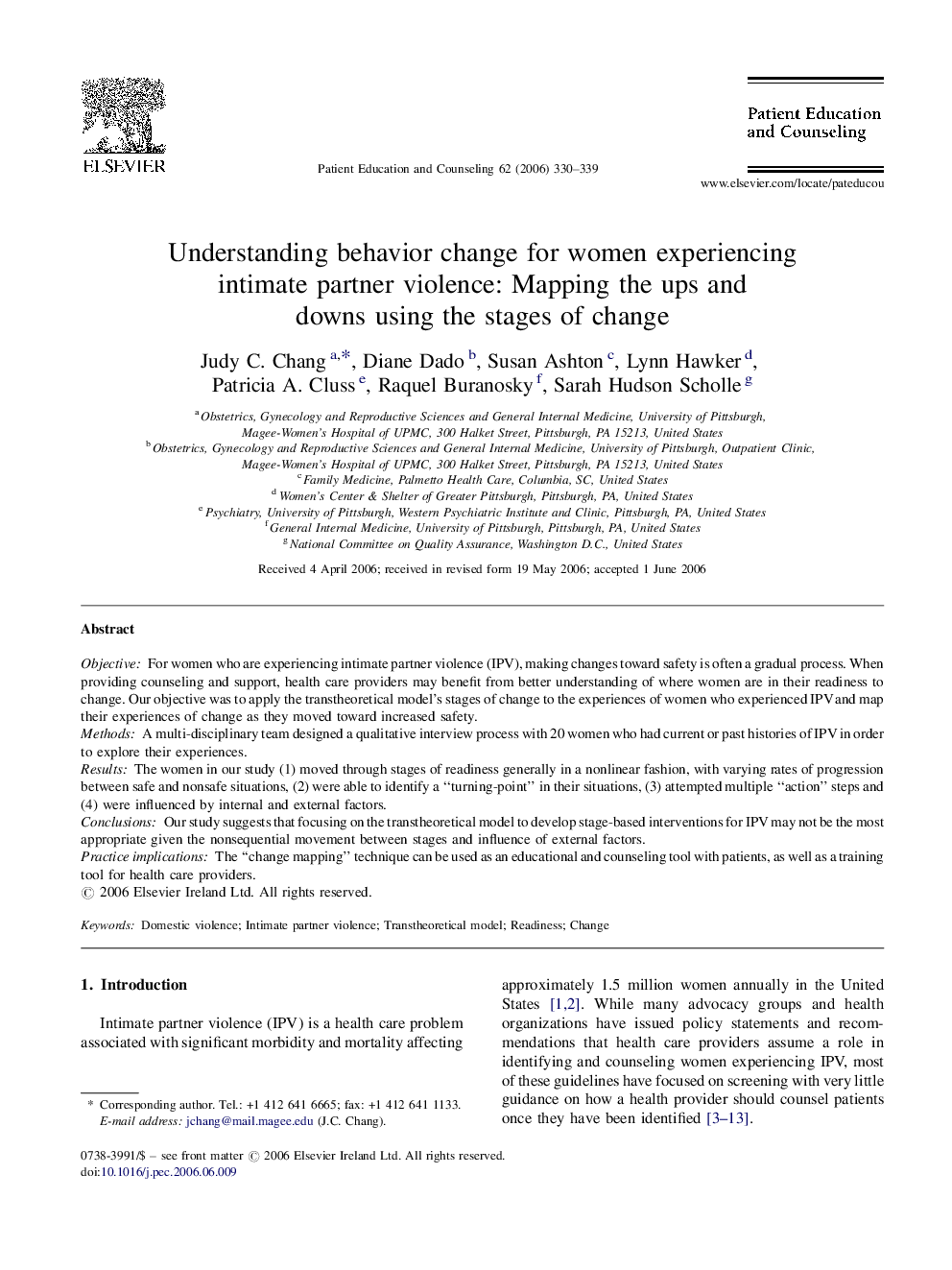| Article ID | Journal | Published Year | Pages | File Type |
|---|---|---|---|---|
| 3815375 | Patient Education and Counseling | 2006 | 10 Pages |
ObjectiveFor women who are experiencing intimate partner violence (IPV), making changes toward safety is often a gradual process. When providing counseling and support, health care providers may benefit from better understanding of where women are in their readiness to change. Our objective was to apply the transtheoretical model's stages of change to the experiences of women who experienced IPV and map their experiences of change as they moved toward increased safety.MethodsA multi-disciplinary team designed a qualitative interview process with 20 women who had current or past histories of IPV in order to explore their experiences.ResultsThe women in our study (1) moved through stages of readiness generally in a nonlinear fashion, with varying rates of progression between safe and nonsafe situations, (2) were able to identify a “turning-point” in their situations, (3) attempted multiple “action” steps and (4) were influenced by internal and external factors.ConclusionsOur study suggests that focusing on the transtheoretical model to develop stage-based interventions for IPV may not be the most appropriate given the nonsequential movement between stages and influence of external factors.Practice implicationsThe “change mapping” technique can be used as an educational and counseling tool with patients, as well as a training tool for health care providers.
